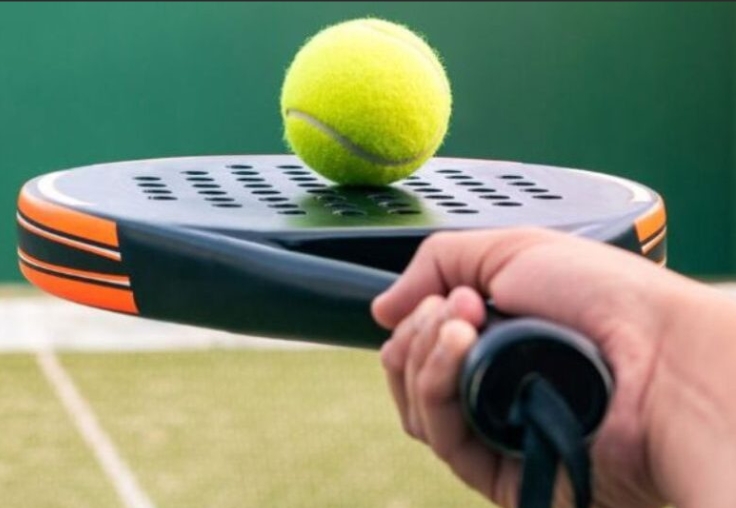How to Choose the Right Padel Racket in 2026
If you play padel (or are just getting started) you’ll know that choosing the right racket can make a big difference in how enjoyable your game is. With more models, materials and styles than ever, it helps to know what to look for — so in 2026 you’ll pick something that really fits your level, playing style and budget.
Here’s a step by step guide to walk you through the process.
________________________________________
1. Define your level & style
Before you even start comparing specs, ask yourself:
• How often do I play? (Once a month vs multiple times a week)
• What’s my skill level? (Beginner, intermediate, advanced)
• What kind of game do I enjoy? (Control / defence, all round, power / attack)
If you’re playing casual “fun” matches once a month, you’ll probably prioritise comfort, manoeuvrability and forgiveness. If you’re playing 2 3 times a week and trying to improve, you might want a racket that gives you room to grow.
If you love smashing and attacking at the net, you’ll lean toward a power racket. If you prefer lobs, placement and out thinking your opponent, you’ll lean toward control. Understanding your style helps you pick the right features below.
________________________________________
2. Racket Shape: Round, Teardrop or Diamond
One of the most important design features is the shape of the racket face and head (which affects sweet spot size, balance and how the racket feels).
Here’s a breakdown:
• Round shape: Big sweet spot, lower balance point; great for beginners or players who prioritise control and manoeuvrability.
• Teardrop shape: Middle ground — gives a blend of control + power; good for intermediate/all round players.
• Diamond shape: Head heavy, smaller sweet spot, built for power and advanced players who can handle the demands.
Tip: If you’re new to the game or still building technique, go with round or teardrop; avoid jumping straight into a diamond unless you have the consistency and strength for it.
________________________________________
3. Weight & Balance
These two specs matter a lot because they affect how the racket swings, how it feels and how your body copes (especially your arm, shoulder, elbow).
Weight
Most adult padel rackets fall in the ~ 340-390g range.
• Lighter (~340 360 g) = easier to manoeuvre, good for beginners or defensive style.
• Medium (~360 370 g) = balanced.
• Heavier (~370 390 g) = more power, but needs more physical control.
Balance
Balance means where the weight lies: toward the head (head heavy), toward the handle (head light), or evenly balanced.
• Head light (low balance) = more control, easier to handle.
• Head heavy (high balance) = more power, but less manoeuvrable and more demanding.
• Medium/even balance = good all round choice.
Rule of thumb: If you struggle with power or feel you're over hitting, control, or feel your arm is tired, go lighter and more head light. If you’re strong, technical and always looking for more power, a heavier or head heavy racket might suit.
________________________________________
4. Materials & Core Technology
What the racket is made of (surface materials, core foam, etc) influences durability, feel, comfort and performance.
Surface / Face Material
• Fiberglass/fibreglass: More flexible, forgiving, good for comfort and beginners.
• Carbon fibre / full carbon: Stiffer, more power and precision, used in higher end rackets for experienced players.
Core / Foam
The core material (EVA, foam, etc) affects touch, vibration and how the ball rebounds.
• Softer EVA / foam → more comfort, easier on joints.
• Harder core → more explosive power, less forgiveness.
________________________________________
5. Grip Size, Handle & Other Practicalities
• Proper grip size matters. If the grip is too small you may over grip (leading to arm/elbow issues).
• Overgrips can help you adjust thickness.
• Consider vibration damping (especially if you have elbow/arm issues). Some rackets/accessories target this.
• Check holes pattern, surface texture, and protective features (frame bumpers, etc) — these affect durability and playing feel.
________________________________________
6. Budget & Value
Buying a racket is an investment, but you don’t always need the latest or priciest model to get great value. Some thoughts:
• For beginners or casual players: Focus on comfort and control rather than paying for ultra power.
• For intermediates: You can look for rackets that give a good balance and some upgrade feel — not necessarily the top of the line.
• For advanced players: You might want the latest tech/materials, but only if you’ll fully exploit them.
Also: buying last year’s model can sometimes get you almost the same performance at a discount.
________________________________________
7. Try Before You Buy (or Demo)
Nothing beats getting the racket in your hand, hitting a few shots and feeling how it behaves. Many padel specialty stores, clubs or demo programmes let you test rackets.
When testing, consider:
• How comfortable is it to swing?
• How stable does it feel on volleys or smashes?
• How forgiving is it on off centre hits?
• Does your arm/shoulder feel okay after using it?
“Try as many rackets as possible … Going with something balanced lets you actually enjoy learning without feeling like the racket is holding you back.
________________________________________
8. Match the Racket to Your Progression
Think of the racket as something that grows with you (if you choose wisely). A beginner shouldn’t pick a racket only suitable for elite players — you’ll struggle or it’ll hinder your development.
If you’re just starting: go for something forgiving (round shape, lighter weight, comfortable materials).
If you’re intermediate and improving: look for a balanced racket (teardrop or mid balance, materials that give some power but aren’t unforgiving).
If you’re advanced: you can pick something with more power, but you must handle the demands (technique, strength, consistency).
________________________________________
9. Common Mistakes to Avoid
• Picking a racket solely because it’s used by a pro / “looks cool”, without considering fit.
• Choosing a heavy, head heavy racket when your technique or strength can’t yet support it — may lead to control issues or injury.
• Ignoring grip size / comfort — this is often overlooked but vital for playability and arm health.
• Skipping demo/testing and just buying online based on specs alone.
• Assuming you’ll immediately “grow into” a very demanding racket — the learning curve may cost you enjoyment or cause frustration.
________________________________________
10. Final Checklist
Before you buy, go through this checklist:
• Is the racket shape aligned with my style (control / all round / power)?
• Is the weight appropriate for my strength/playing frequency?
• Is the balance (head light / neutral / head heavy) right for me?
• Are the materials comfortable and suited to my game (and potential arm/shoulder issues)?
• Is the grip size comfortable and fit for my hand?
• Have I tested the racket or tried something similar?
• Does the price make sense for my level and playing goals?
• Am I buying something I can use now and that won’t quickly become a mismatch as I progress?
Don't forget, The Padel Directory members receive discounts at all the major UK stores, helping you save money on your next padel racket!
Best of luck on court!




.png)






.avif)








